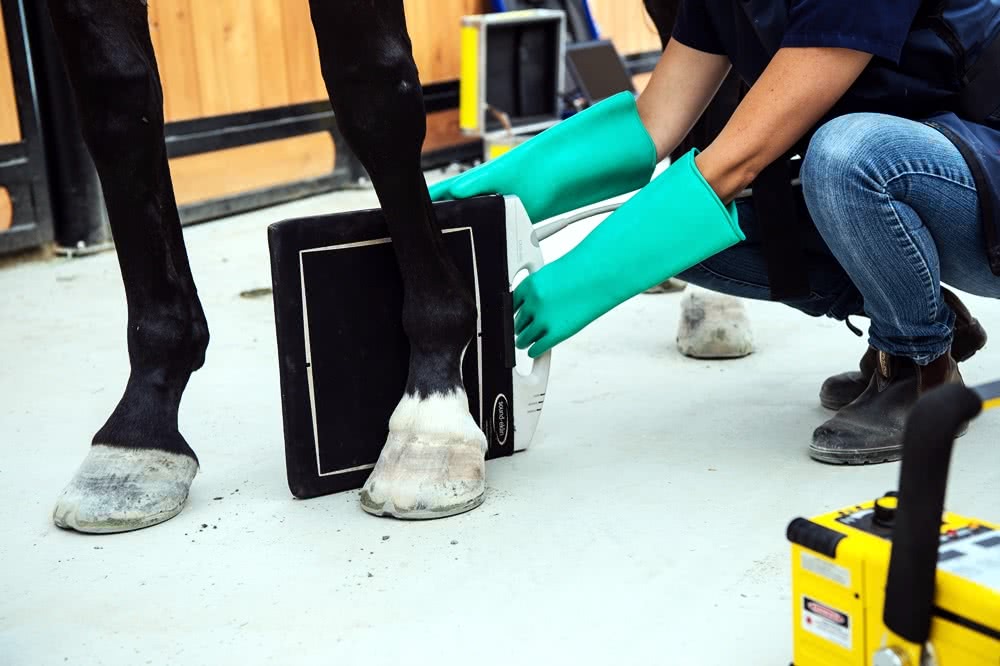
Lameness diagnostics and therapeutics are rapidly advancing areas in equine sports medicine. Lameness is the most common cause of limiting performance, and can range from being very obvious to extremely subtle. We utilize multiple modalities including palpation, joint and nerve anesthesia, digital radiography and digital ultrasonography to locate the cause of the lameness. We then work with you, based on your goals and expectations, to customize the appropriate therapeutic and rehabilitative plan for your horse.
PRP Treatment
PRP, or Platelet Rich Plasma is a concentrate of the platelets from a sample of the horse’s own blood, taken sterilely and processed in a specific manner. Platelets are a very powerful component of blood which, when activated, release a variety of growth factors and cytokines to attract other healing cells to the area. If a tendon or a ligament has a “core lesion” within it, it typically is an excellent candidate for PRP therapy. Injecting PRP into a tendon or ligament injury can both speed the healing process and help the injury heal more effectively (ie with less scar tissue), making it less prone to reinjury in the future. The lesion in the tendon/ligament is injected under ultrasound guidance so the veterinarian can be sure the PRP is being injected into exactly the right spot within the injury. The PRP treatment is best used in combination with a tailored rest and rehabilitation program to give the horse the very best chance at a full recovery.
Prostride Treatment
ProStride, is an autologous protein solution, which effectively combines PRP with naturally occurring anti-inflammatory molecules like Interleukin-1 Receptor Antagonist Protein (IRAP) and Tumor Necrosis Factor (TNF-α). This makes for a potent anti-inflammatory product that also promotes repair of damaged tissues. Like the PRP, this product is made from a sample of the horse’s own blood, processed in a specific way. ProStride makes an excellent alternative to steroid joint injections for those horses who cannot safely have steroids due to metabolic disease, or who have a combination of arthritis and soft tissue injury, or who are not responding to intra-articular steroids as well as they once were.
